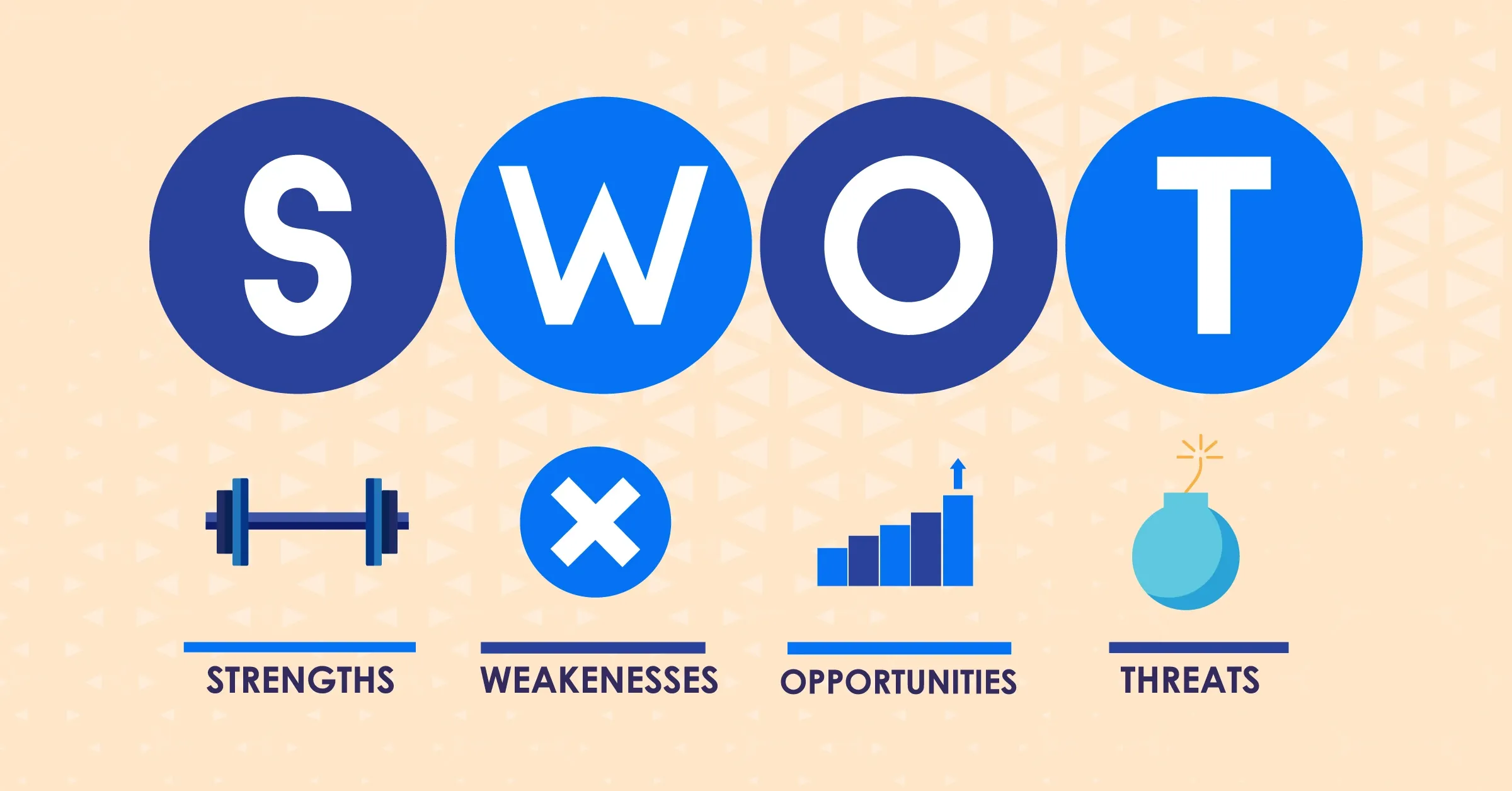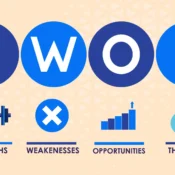SWOT Analysis for Marketing

October 8, 2025
/
SWOT Analysis for Marketing
In today’s competitive business world, success depends on understanding your market, customers, and competitors. One of the most powerful frameworks for achieving this is the SWOT Analysis for Marketing — a strategic tool that helps businesses identify their Strengths, Weaknesses, Opportunities, and Threats to create data-driven marketing plans that actually work.
Whether you’re managing a small startup in the Middle East, running a digital agency, or leading a multinational marketing team, mastering SWOT analysis is essential to make informed decisions and gain a lasting competitive edge.
What Is SWOT Analysis for Marketing?
A SWOT analysis for marketing is a strategic framework used to assess both the internal and external factors that influence a company’s marketing performance. It focuses on identifying Strengths — the internal advantages that set a brand apart, such as strong brand recognition, loyal customers, or innovative offerings — and Weaknesses, which are internal challenges like limited budgets, weak digital visibility, or outdated tools that can restrict growth. On the external side, a SWOT analysis examines Opportunities that a business can leverage to expand its market share, including emerging trends, technological advancements, or untapped customer segments. It also considers Threats, such as new competitors, shifting consumer behaviors, or economic instability, that could negatively affect business performance. By clearly understanding these four dimensions, marketers can develop data-driven strategies that strengthen their position, minimize risks, and capitalize on growth potential.Why SWOT Analysis Matters in Marketing
Performing a SWOT analysis for marketing helps you:- Develop smarter, data-based strategies.
- Identify areas to improve before launching campaigns.
- Spot market gaps and innovation opportunities.
- Strengthen your brand positioning against competitors.
- Make informed decisions about product launches or market expansion.
Components of SWOT Analysis for Marketing
Strengths
Strengths are your internal advantages that make you stand out in the marketplace. Examples include:- Strong online presence and brand reputation.
- High customer satisfaction and loyalty.
- Skilled marketing team with creative expertise.
- Advanced data analytics and automation tools.
- Unique value propositions or innovative products.
Weaknesses
Weaknesses are internal areas that need improvement. These are the gaps that might be holding your marketing efforts back. Examples include:- Inconsistent branding or tone.
- Lack of digital marketing skills.
- Small marketing budget.
- Poor SEO performance or low online visibility.
- Limited knowledge of target audience behavior.
Opportunities
Opportunities are external possibilities that your business can take advantage of to grow and improve market share. Examples include:- Expanding into new markets or regions.
- Leveraging social media trends and influencer marketing.
- Using new technologies like AI and automation in marketing.
- Launching eco-friendly or socially responsible campaigns.
- Increasing demand for online products and services in the Middle East.
Threats
Threats are external factors that can negatively impact your brand’s success. Examples include:- Market saturation or intense competition.
- Changes in consumer preferences or digital algorithms.
- Economic instability or currency fluctuations.
- New government regulations or trade restrictions.
- Negative press or social media backlash.
How to Conduct a SWOT Analysis for Marketing
Performing a SWOT analysis doesn’t have to be complicated. Here’s a step-by-step process:Step 1: Gather Data
Collect information from different sources such as analytics tools, surveys, customer feedback, and competitor research.Step 2: Identify Internal Factors
List all your strengths and weaknesses. Analyze your team’s capabilities, tools, marketing results, and brand reputation.Step 3: Assess External Factors
Study your opportunities and threats. Look at market trends, economic shifts, competitor strategies, and technological advancements.Step 4: Create a SWOT Matrix
Divide your findings into four quadrants — Strengths, Weaknesses, Opportunities, and Threats for a visual overview.Step 5: Prioritize Actions
Use your SWOT findings to set actionable goals:- Enhance strengths and build campaigns around them.
- Address weaknesses with training or new resources.
- Leverage opportunities through innovation.
- Develop contingency plans for threats.
Step 6: Review Regularly
The marketing world changes fast. Conduct a SWOT analysis every 6–12 months to keep your strategy relevant and agile.Benefits of Using SWOT Analysis for Marketing
- Helps clarify marketing goals and KPIs.
- Aligns marketing with company vision and growth.
- Improves communication within teams and departments.
- Makes decision-making more strategic and less reactive.
- Highlights hidden opportunities for brand expansion.
Frequently Asked Questions (FAQs)
- What is a SWOT analysis in marketing? It’s a strategic framework that helps identify internal strengths and weaknesses, and external opportunities and threats affecting marketing performance.
- Why is SWOT analysis important for marketers? It provides a clear view of what’s working, what’s not, and how to align marketing strategies with market conditions and customer needs.
- How often should a company do a marketing SWOT analysis? Ideally every 6 months or before launching new campaigns, entering new markets, or rebranding.
- Can small businesses use SWOT analysis? Absolutely. It’s an effective, free tool that helps small businesses compete strategically by understanding their position in the market.
- What are common weaknesses in marketing SWOT analysis? Limited resources, weak online presence, lack of audience insights, and outdated tools or data.
- What tools can help with a marketing SWOT analysis? Data analytics tools (like Google Analytics), competitor research tools, and customer survey platforms can all provide valuable insights.
Conclusion
A SWOT analysis for marketing is more than just a list — it’s a roadmap to smarter decision-making and sustainable growth. By evaluating your strengths, weaknesses, opportunities, and threats, you can design strategies that are flexible, resilient, and tailored to your audience. Whether you’re building a marketing campaign in Jordan, launching a new product in the UAE, or expanding globally, understanding your SWOT will keep your brand focused and future-ready.Recent Posts
ahmed/0 Comments
SWOT Analysis for Marketing
ahmed/0 Comments
SEO Audit: The Ultimate Guide to Perfecting Your Website Performance
ahmed/0 Comments




